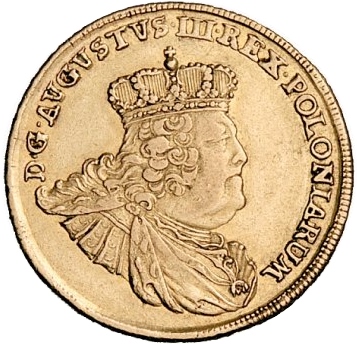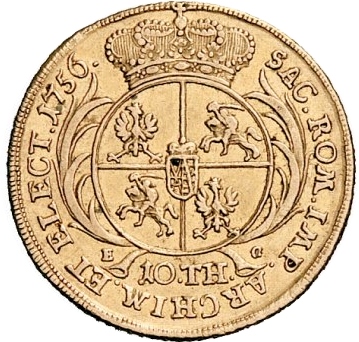Saxony (Albertinian Line), Electorate of 10 Thalers - Frederick August II
Introduction
The Saxony 10 Thalers coin, minted in 1756 during the reign of Frederick August II, holds a special place in numismatic history. This gold coin showcases intricate designs and historical significance that make it a prized possession for collectors worldwide.
Historical Background
The Electorate of Saxony, under the rule of Frederick August II of the Albertinian Line, issued the 10 Thalers coin in 1756. This period marked a time of economic prosperity and cultural advancement in Saxony, reflected in the artistry of its coinage.
Coin Images
 Obverse
Obverse
 Reverse
Reverse
Design Features
The obverse of the coin features a crowned, draped bust of Frederick August II facing right, symbolizing power and authority. On the reverse, the crowned arms of Saxony are depicted within branches, with the coin's denomination displayed below, showcasing the heraldic heritage of the region.
Technical Specifications
This 10 Thalers coin is crafted from gold, weighing 13.33g and measuring 31.00mm in diameter. The precision in the coin's dimensions and composition speaks to the advanced minting techniques of the era, adding to its allure for collectors.
Collectible Value
The Saxony 10 Thalers coin of 1756 holds significant collectible value due to its historical importance, exquisite design, and limited mintage. Its rarity and desirability among numismatists contribute to its higher market value, making it a sought-after piece for discerning collectors.
Conclusion
In conclusion, the Saxony 10 Thalers coin featuring Frederick August II from 1756 is not just a piece of currency but a tangible piece of history that encapsulates the wealth and artistry of its time. Its beauty, rarity, and historical significance make it a prized addition to any numismatic collection, showcasing the enduring legacy of Saxony's numismatic heritage.

